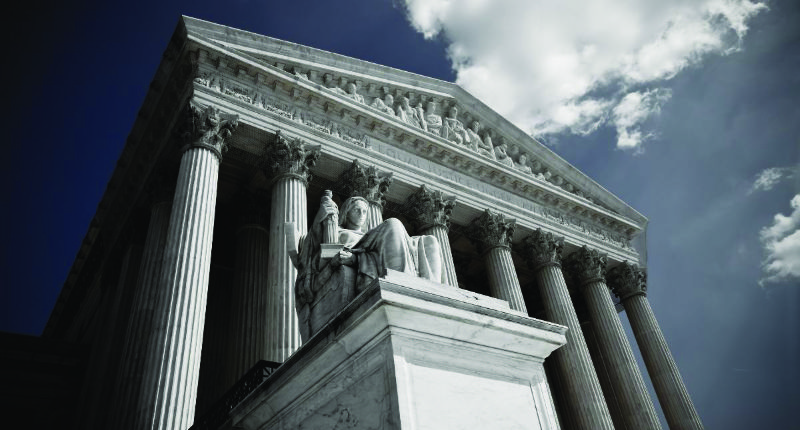Louisiana Redistricting Case – An Attack on Voting Rights
On March 24, the U.S. Supreme Court heard a pivotal case out of Louisiana that could reshape the future of voting rights nationwide.
The consolidated cases — Louisiana v. Callais and Robinson v. Callais — challenge the congressional map drawn by the Louisiana state legislature in 2024. This map was created after a lower federal court, the Fifth Circuit, found that the 2022 version likely violated Section 2 of the Voting Rights Act of 1965, which prohibits racial discrimination in voting practices.
In a media briefing on March 14, hosted by Ethnic Media Services, experts discussed the attack on voting rights in the South with respect to the case on Louisiana’s redistricting.
Speakers
![]()
- Ashley Shelton, Executive Director, Power Coalition for Equity & Justice
- Victoria Wenger, Counsel at NAACP Legal Defense and Educational Fund, Inc. (LDF)
- Davante Lewis, Public Service Commissioner, LA District 3
- Alanah Odoms, Executive Director, American Civil Liberties Union-Louisiana (ACLU-LA)
This case follows closely behind the landmark Allen v. Milligan decision in Alabama, in which the Supreme Court upheld protections under Section 2, ruling against the dilution of Black voting power through redistricting.
The Path to the High Court
Black voters in Louisiana make up about one-third of the state’s population across six congressional districts, making Louisiana the second-Blackest state in the country.
Plaintiffs in the case argue that this demographic makeup warrants at least two majority-Black districts to ensure fair representation. However, under the 2022 map, only one district had a Black majority, effectively limiting Black voters’ ability to elect candidates who represent their interests, according to Victoria Wenger.
In a preliminary injunction hearing (basically a mini trial) they “were able to prove that Section 2 of the VRA was violated, and the court enjoined the legislature to draw a new map,” Wenger said. The court then ordered the legislature to redraw the map. “They didn’t pass a new fair map … and while Milligan was still pending, the Supreme Court put our case on pause so that in 2022, a map with only one majority Black district was in place for our congressional elections.”
After the Milligan ruling in 2023 affirmed the strength of Section 2, the Fifth Circuit gave Louisiana until January 2024 to create a new map. The legislature, now controlled by a Republican supermajority, drew a new map with two majority-Black districts.
However, a group of white voters sued, claiming the new map violated the Equal Protection Clause of the 14th Amendment by prioritizing race over traditional districting principles like geographic shape or community interests.
Now, the NAACP LDF and its allies are arguing before the Supreme Court that while race was indeed considered in redrawing the districts — as required by the Voting Rights Act — it was not the sole or dominant factor. “the Supreme Court has created an exception where even if they find race is predominant, state legislatures can still prioritize race if they have good reason to believe they have to to comply with the VRA.” Wenger explained, noting that other considerations, such as local geography and political boundaries, also shaped the map.
The Human Cost of Gerrymandering
Davante Lewis described the broader implications. “We talk about voter suppression and voter apathy, but like I like to remind people: If we know our vote does not matter because the district is so gerrymandered, why should we participate in the political system?” he asked.
He emphasized the importance of activism throughout this process. “If you would have asked us in January 2021, when we started this process, whether we would have two minority majority districts, we would have said probably not … but we advocated, we agitated, we litigated, and now we have results.”
Ashley Shelton said community engagement has been essential. Since 2021, her organization has held public listening sessions statewide, leading to record turnout at redistricting hearings.
“In our first session, we heard from a young woman who was the student government president at Dillard University, and she told the legislature that our young people are leaving the state in droves because they cannot trust them to do the right thing,” Shelton said. “If Black voters thought they could elect a candidate of choice, we know it would impact voter turnout, and there were many arguments throughout this fight where the lawyers said that wasn’t true.”
In the first election held under the new maps in November 2023, Black voter turnout rose by two percentage points in Louisiana and by five points in Alabama.
A Turning Point for Voting Rights
Alanah Odoms stressed the stakes. “Sixty years after the civil rights movement, here we are, still marching, still fighting, still litigating, because while some things have changed, the struggle for voting rights is far from over,”
Odoms described the current state of voter suppression as “a boot on the neck of Black voters,” and said the goal is simply to remove that burden, in line with the Constitution and the Voting Rights Act.
“The Act pertains to every state in the nation,” she said. The Supreme Court’s decision “determines how elections will be handled and how districts will be drawn nationwide.”
If the Court rules against the plaintiffs, Odoms warned, it could spark a wave of states ignoring demographic changes that show the nation is growing more racially diverse, in favor of preserving districts that continue to elect white-preferred candidates.
“But we won at the federal court level already … an overturning of decades-long precedent would be quite shocking. We feel very confident about the Supreme Court’s ruling.”
Images provided by Ethnic Media Services.


